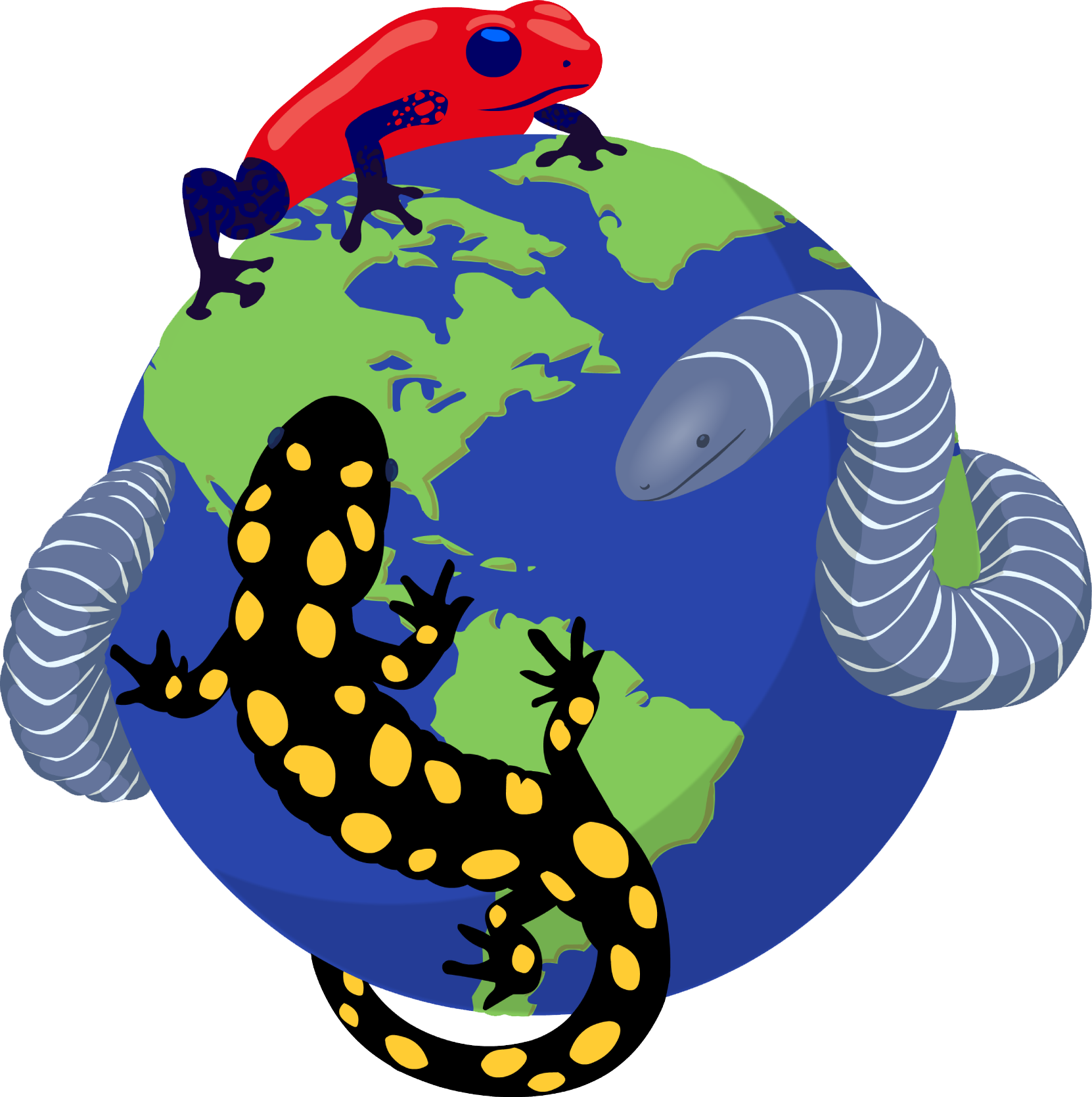|
Atelopus senex Taylor, 1952
| family: Bufonidae genus: Atelopus |
 © 2010 Division of Herpetology, University of Kansas (1 of 2) |
|
|
|
Description The head is angular, and longer than it is wide (Savage 2002). It has a narrow, rounded snout with a depression between the canthi (Taylor 1952). The snout projects beyond the lips (Taylor 1952). Nostrils are closer to the tip of the nose than to the eyes (Taylor 1952). The lips are lighter in color and have a distinct medial notch (Taylor 1952). From the eye there is a bony temporal ridge and a distinct post-orbital ridge coming off of it (Taylor 1952). There are no visible tympana (Savage 2002). On the shoulders the suprascapulae form a prominent ridge (Taylor 1952). The body is slender, with long arms and legs (Savage 2002). More than half of the forearm extends past the tip of the snout (Taylor 1952). The fingers are thickened at the base and have terminal pads (Taylor 1952). Thumbs are webbed basally and have brown nuptial pads in the male (Savage 2002). The toes are fully webbed and have small terminal pads (Taylor 1952). The skin has multiple tubercles in the groin region (Taylor 1952). Tubercles are also scattered on the sides of the neck and body as well as on the front surface of the upper arm (Taylor 1952). There are tiny pustules on the dorsum in many individuals, and occasionally spicules on the anterior flanks in larger adults (Savage 2002). Males may be bluish gray, blue-green, black, or occasionally greenish, and tend to have a uniform ground color (Savage 2002). In males, the parotoid and limb glands are pink to cream-colored (Savage 2002). Females have similar ground coloration but may be patterned. The patterning on females consists of contrasting dark and light areas, with the light areas being cream, lemon, or lime-colored (Savage 2002). For both sexes, the venter is gray, sometimes with a yellow to orange tinge, and may or may not have black markings (Savage 2002). Distribution and Habitat Country distribution from AmphibiaWeb's database: Costa Rica
Life History, Abundance, Activity, and Special Behaviors Trends and Threats Possible reasons for amphibian decline General habitat alteration and loss Comments A Spanish-language species account can be found at the website of Instituto Nacional de Biodiversidad (INBio).
References
Savage, J. M. (2002). The Amphibians and Reptiles of Costa Rica:a herpetofauna between two continents, between two seas. University of Chicago Press, Chicago, Illinois, USA and London. Taylor, E.H. (1952). "A review of the frogs and toads of Costa Rica." University of Kansas Science Bulletin, 35(5), 577-942. Originally submitted by: Natalie Levy (first posted 2007-04-05) Edited by: Kellie Whittaker (2009-11-02) Species Account Citation: AmphibiaWeb 2009 Atelopus senex <https://amphibiaweb.org/species/79> University of California, Berkeley, CA, USA. Accessed Jun 4, 2025.
Feedback or comments about this page.
Citation: AmphibiaWeb. 2025. <https://amphibiaweb.org> University of California, Berkeley, CA, USA. Accessed 4 Jun 2025. AmphibiaWeb's policy on data use. |




 Map of Life
Map of Life